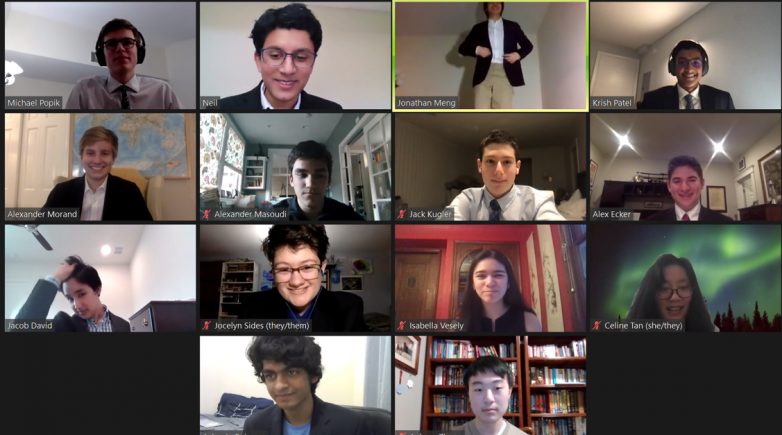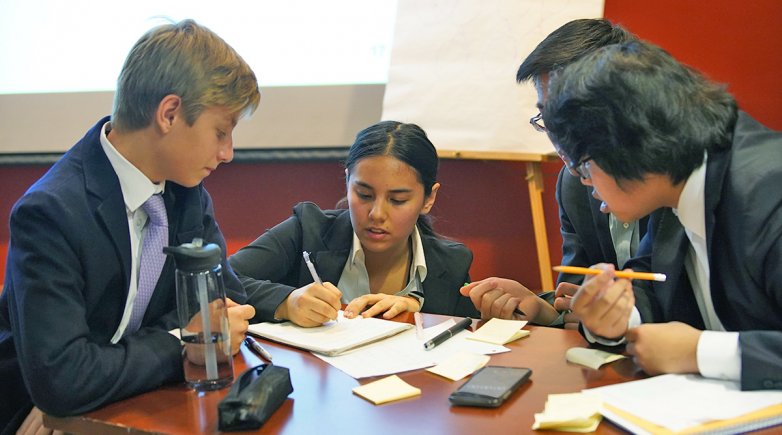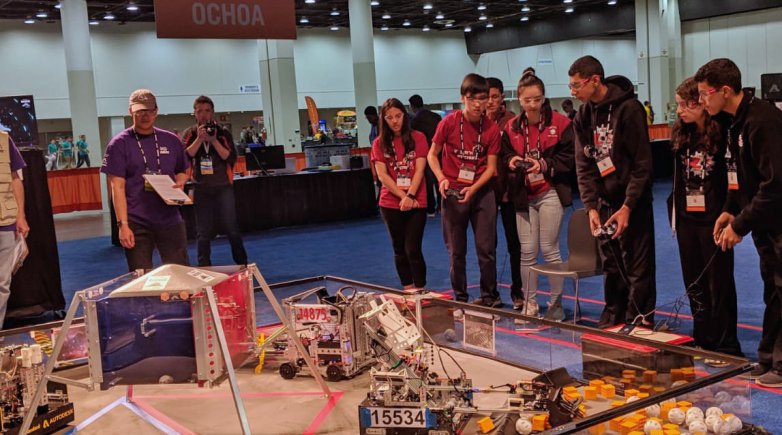Exeter reclaims crown at young physicists tournament
PEA outclasses competition at USAYPT for third title in four years.
For the third time in four years, the best young physicists in the country wear Big Red.
Exeter’s Physics Club claimed top spot in the 14th U.S. Association for Young Physicists Tournament last weekend, combining months of preparation with game-day poise to outpoint 10 rivals from the United States and China. The Science House at North Carolina State University and Cary Academy were co-hosts of the event, this year held online because of COVID-19 precautions.
The inner workings of a lava lamp and the physics of terrestrial and lunar impact craters were among the specific problems the students had to master, but Exeter’s aptitude was built on teamwork and exhaustive research.
“After a while, it felt that we were in the same room every evening working together on all the problems,” said Alexander Morand ’22, a three-veteran of the USAYPT and Exeter’s captain. “Zoom or no Zoom, we worked hard as a team and, as individuals, we each became proficient in all the problems, something that really helped us on the day of the competition.”
Preparation for the annual January tournament begins the previous spring, with teams investigating college-level research problems. PEA’s team zeroed in on three problems to present and spent fall term meeting weekly as a group on Zoom with a bi-weekly focus on the USIYPT, but physical-distancing guidelines constrained in-person experimentation. A week before the competition, the team presented its problems over Zoom to club adviser Scott Saltman and other faculty from the Science Department and received important feedback.
The competition itself traditionally consists of head-to-head debates over the quality of each team's solution. Teams are judged on their own solutions to the problems and on their ability to evaluate and discuss the opposition’s solutions.
Club co-heads Morand, Neil Chowdhury ’22, Jacob David ’22 and Jonathan Meng ’21 were the problem presenters this year, but Morand credited the team’s “scouts” – club members who “watch the other teams’ presentations to observe weaknesses and strengths and to take notice of jurors’ and opposition team’s questions” — as critical to PEA’s success.
The other club members are: Alex Ecker ’22, Jack Kugler ’23, Alexander Masoudi ’22, Krish Patel ’23, Michael Popik ’22, Achyuta Rajaram ’24, Jocelyn Sides ’22, Celine Tan ’22, Isabella Vesely ’23 and Aubrey Zhang ’23.
Exeter qualified for the round-robin final along with The Nueva School of California and Woodberry Forest School of Virginia.
“Our strategy of knowing each other’s problems paid off well during the final round,” said Morand, who opposed The Nueva School’s crater solution while David presented his chatter-ring solution against Woodberry Forest. “During presentations, and even while oppositions took place, we were able to communicate quickly and agree on key questions to ask and on points to emphasize in our answers. In the end, I think the team’s camaraderie, intense preparation and passion for physics is what led us.”
Exeter and The Harker School of California are the only three-time winners of the competition.



